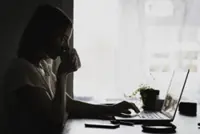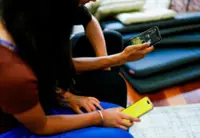A picture shows the front pages of some of Britain’s national newspapers, dominated by stories about the altered Mother’s Day photo released by Kensington Palace on March 10, of Britain's Catherine, Princess of Wales and her children, in London on March 12, 2024. The Princess of Wales on Monday apologised and admitted to editing an official portrait of her released by the palace that prompted AFP and other agencies to withdraw the altered image. Kensington Palace, however, said it would not republish the original, unedited photo. — AFP
LONDON: Trace back the digitally altered photograph of Catherine, Princess of Wales, and its roots lie in a tragedy of another Princess of Wales, Diana, whose death in 1997 predated the creation of Facebook by nearly seven years.
Diana’s fatal car accident, after a high-speed pursuit by photographers in Paris, left a lasting imprint on her sons, William and Harry. They grew up vowing not to take part in what they viewed as a pathological relationship between the royal family and the press, one in which they were the abused partners.





